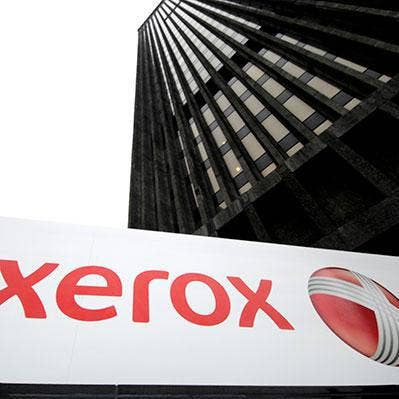Xerox: 5 Things The Company Is Doing To Change Course

A Company In Motion
Xerox announced Monday that it is considering a “strategic transaction” for its customer financing unit, which is the latest step in the company’s bid to reinvent itself under CEO John Visentin.
Since Visentin took over in May, the iconic American copy brand has hardly taken a break, or had a break, with Fujifilm suing Xerox in June for breach of contract, and Visentin carrying out a massive internal reorganization that culminated at the end of the year with new leaders and new structures in place.
The company responded to the June lawsuit on Friday.
In addition to the sale of the financing unit, the company is now in the process of merging under Xerox Holding Company.
Amid all of this, the company’s share price has continued to climb.

Sale Of Customer Financing
The deal that was rumored by Reuters several months ago appears to be back on Visentin’s to-do list, with Xerox writing about a “potential strategic transaction involving our customer financing business and/or related assets.” That unit caries $3.4 billion of Xerox’s total $5.2 billion worth of debt.
“In connection with the company’s initiative to simplify and optimize its operations, the company is currently exploring the possibility and feasibility of a strategic transaction involving its customer financing business.”
The company said no commitment has been made regarding a sale or about the proceeds of the transaction, should one occur, or how it would impact its overall business.
“Xerox’s go to market strategy includes providing financing for customers, primarily under bundled lease agreements (bundles includes equipment, financing, services, supplies).”

Xerox Holding Company
Xerox announced a structural reorganization of the company on March 5, in which all of the assets of Xerox would be merged under Xerox Holding Company. The move is similar to the one Google carried out in 2015, when it created Alphabet. Under the terms of this deal however, Xerox would continue trading under the same ticker symbol.
“The purpose of the reorganization is to provide the company with strategic, operation and financial flexibility,” the company said in a slideshow it filed with the SEC. “Business operation, directors, and executive officers of the company will not change as a result of the reorganization. The reorganization will result in each holder of the company’s common stock owning the same number of shares of common stock in the new holding company.”
The deal is subject to shareholder approval as well as regulatory approval and is expected to be implemented in mid-2019.

Xerox Responds To Fujifilm’s $1 Billion Lawsuit
Xerox responded Friday to the $1 billion breach of contract lawsuit that it was hit with in June 2018, after a deal with Fujifilm dissolved amid four civil lawsuits and a complete reshuffling of the board of directors, and company leadership.
In its response filed Friday in U.S. District Court in New York’s Southern District, the company claimed Fujifilm was at fault for the broken deal. “Injuries alleged by Fuji if any, were caused, in whole or in part, by its own conduct or the conduct of its agents,” Xerox said. It added that the merger could not happen “because of Fuji’s own failures to comply with its obligations under the Transaction Agreements.”
Xerox’s lawyers went on to say Fuji’s claims should be barred due to “the doctrine of unclean hands” and there should be no recovery of money because “Fuji’s injury, if any, resulted from the acts of third parties over whom Xerox had neither control nor the right to control.”

Amid The Tumult, Xerox’s Value Is Rising
Wall Street seems to enjoy the spectacle of watching Xerox reinvent itself.
The stock was trading at $31.83 Monday, that’s more than $20 higher than it was trading at the end of the year -- just three months ago. Since share price is at the core of why the Fujifilm deal fell apart -- with majority owner Carl Icahn objecting to the $25 per share purchase price that ex-Xerox XEO Jeff Jacobson negotiated – it has been viewed as a bellwether for Icahn critics to determine if the new leadership is performing well.

The Three-Year Plan
All of this is happening in the first few months of Visentin’s three-year plan to turn the company around. In the closing days of the year, Xerox realigned its go-to-market leadership into two groups: the Americas Operations and EMEA. Leading the Americas operation is Mike Feldman, currently president of North America operations for the company.
“These changes reflect a closer alignment with industry standards and the way our customers expect to buy and be serviced, making it easier for them to do business with us,” Visentin wrote in a Dec. 17 memo. “At the same time, we are optimizing our operations. This will create a simpler, flatter, more agile organization that will help empower our people and make it easier to speed decisions into action on behalf of our customers, as well as create ways to work more productively … The changes in our go-to-market operations, Global Delivery and Global Supplies are significant steps towards achieving our vision of becoming a tech powerhouse and position us for a strong start in 2019. By removing complexity in the way we work, organizing more effectively, and creating greater customer focus, we will be able to improve our customers’ experience and drive even greater revenue opportunities for Xerox next year and beyond.”